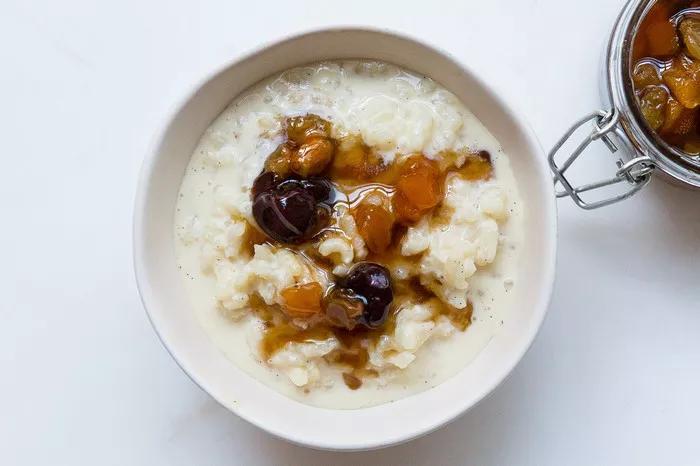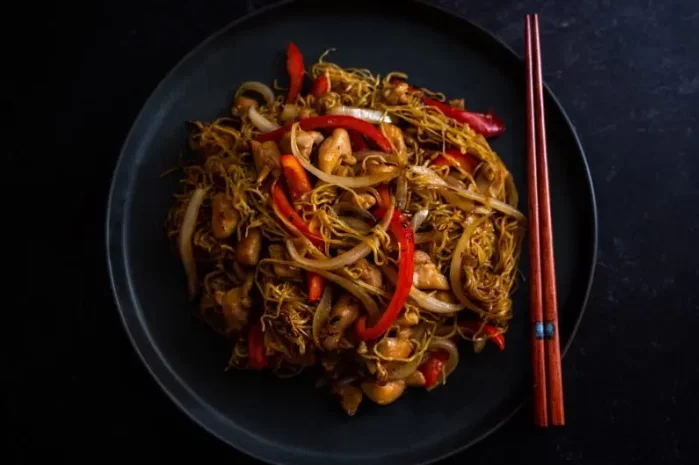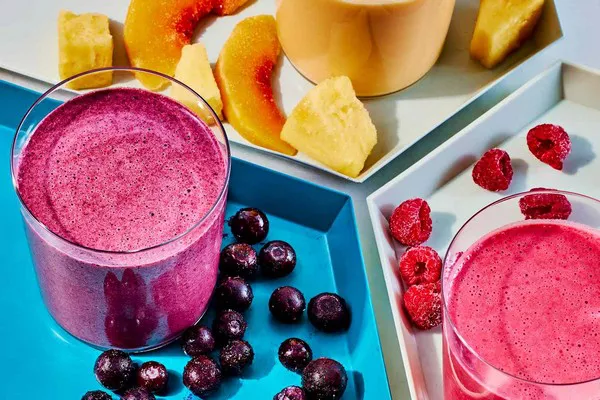Rice pudding is a timeless dessert, cherished for its creamy texture and sweet flavor. This simple dish can be made with minimal ingredients, yet it offers endless possibilities for variations. In this comprehensive guide, we will walk you through each step of preparing rice pudding, from choosing the right ingredients to serving it perfectly.
Ingredients Needed
To make a classic rice pudding, gather the following ingredients:
1 cup of rice: Short-grain rice or arborio rice is preferred for a creamy texture.
4 cups of milk: Whole milk provides richness, but you can also mix in cream for extra creaminess.
½ cup of granulated sugar: Adjust to taste; brown sugar can also be used for a deeper flavor.
Pinch of salt: Enhances the overall taste.
1 teaspoon of vanilla extract: Adds a lovely aroma and flavor.
¼ teaspoon of ground cinnamon: Optional, for a warm spice note.
2 large eggs: Optional, for a richer pudding.
2 tablespoons of unsalted butter: Adds creaminess and a subtle flavor.
½ cup of raisins or other dried fruits: Optional, for texture and sweetness.
Fresh fruit or nuts: Optional, for garnishing.
SEE ALSO: How to Prepare Baked Egg Custard
Step 1: Choosing the Right Rice
Selecting the right rice is crucial for achieving the desired texture of your pudding.
Short-Grain Rice: This type of rice is starchy and absorbs liquids well, resulting in a creamy pudding. Examples include sushi rice or arborio rice.
Long-Grain Rice: While possible to use, it may yield a drier texture.
Leftover Rice: If you have cooked rice from a previous meal, you can use it. This will save time, and it’s a great way to avoid food waste.
Step 2: Cooking the Rice
Rinsing the Rice
Rinsing the rice before cooking is an essential step.
Measure the Rice: Take 1 cup of rice and place it in a fine-mesh strainer.
Rinse Under Cold Water: Hold the strainer under cold running water for about 1-2 minutes. This helps remove excess starch, preventing the pudding from becoming overly sticky.
Cooking the Rice
Now it’s time to cook the rice:
Boil Water: In a medium saucepan, bring 2 cups of water to a boil.
Add the Rice: Once boiling, add the rinsed rice to the pot.
Simmer: Reduce the heat to low, cover the pot, and let it simmer for about 15 minutes. Check occasionally to ensure it doesn’t stick.
Check for Tenderness: The rice should be tender and most of the water absorbed. If not, continue cooking for a few more minutes.
Step 3: Preparing the Pudding Base
Adding Milk
After cooking the rice, you’ll create the pudding base:
Combine Ingredients: To the cooked rice, add 4 cups of milk. For a richer flavor, consider using 2 cups of whole milk and 2 cups of cream.
Stir in Sugar and Salt: Mix in ½ cup of sugar and a pinch of salt. Adjust the sugar based on your taste preference.
Heat Gently: Place the saucepan over medium heat. Stir occasionally to ensure the rice doesn’t stick to the bottom.
Thickening the Mixture
The pudding will start to thicken as it cooks:
Stir Frequently: Continue stirring every few minutes for about 20-30 minutes. This helps release the rice’s starch, giving the pudding its creamy texture.
Check Consistency: The pudding should be thick enough to coat the back of a spoon but still pourable.
Step 4: Flavoring the Pudding
Adding Vanilla and Spices
Vanilla Extract: Once the pudding thickens to your liking, remove it from heat and stir in 1 teaspoon of vanilla extract. This adds a delightful flavor and aroma.
Cinnamon: For an extra layer of flavor, add ¼ teaspoon of ground cinnamon. You can adjust this to your preference, or even substitute it with nutmeg for a different spice profile.
Incorporating Eggs (Optional)
If you prefer a richer, custard-like texture, consider adding eggs:
Beat the Eggs: In a separate bowl, beat 2 large eggs until well mixed.
Temper the Eggs: To prevent scrambling, gradually add a small amount of the hot rice mixture to the eggs, whisking continuously. This warms the eggs without cooking them.
Combine: Slowly pour the tempered egg mixture back into the saucepan, stirring well to incorporate it into the pudding.
Step 5: Adding Fruits and Nuts
Incorporating Raisins or Fruits
To enhance the pudding’s flavor and texture, consider adding fruits:
Add Raisins: Stir in ½ cup of raisins to the pudding mixture. You can also use dried cranberries or apricots.
Fresh Fruits: If you prefer fresh fruits, such as berries or bananas, wait until serving time to add them. This prevents them from becoming mushy.
Step 6: Serving the Rice Pudding
Chilling the Pudding
Cool Down: Let the rice pudding cool to room temperature before refrigerating. This allows the flavors to meld.
Refrigerate: Transfer the pudding to a serving dish or individual bowls and refrigerate for at least 2 hours. Chilling helps the pudding firm up and enhances its flavors.
Serving Suggestions
Garnish: Before serving, you can garnish with a sprinkle of cinnamon, a dollop of whipped cream, or a few fresh fruit pieces on top.
Warm or Cold: Rice pudding can be enjoyed warm or cold. If you prefer it warm, gently reheat it on the stove, adding a splash of milk to maintain the creamy texture.
Tips for Perfect Rice Pudding
Adjust Sweetness: Taste the pudding as it cooks and adjust the sugar to your liking. You can also experiment with different sweeteners, such as honey or maple syrup.
Experiment with Flavors: Feel free to add different spices or flavorings, like almond extract or lemon zest, for a unique twist.
Texture Preference: If you prefer a chunkier texture, consider adding less milk during cooking or incorporating larger pieces of fruit.
Storing Rice Pudding
To keep your rice pudding fresh:
Airtight Container: Store the pudding in an airtight container in the refrigerator. It will stay good for up to 5 days.
Reheating: If the pudding thickens too much in the fridge, stir in a bit of milk before serving to loosen it up.
Common Variations
Rice pudding is a versatile dish that can be customized in many ways:
Coconut Rice Pudding: Substitute coconut milk for regular milk for a tropical flavor.
Chocolate Rice Pudding: Stir in cocoa powder or chocolate chips for a decadent twist.
Savory Rice Pudding: For a unique take, consider making a savory version with cheese and herbs, serving it as a side dish.
Conclusion
Making rice pudding is a delightful culinary experience that yields a comforting dessert loved by many. With just a few simple ingredients and steps, you can create a creamy and flavorful dish that can be enjoyed in various ways. Whether you stick to the classic recipe or experiment with different flavors, rice pudding is sure to please.
Enjoy making this timeless treat at home, and savor the warmth it brings to your table!
Related topics:























